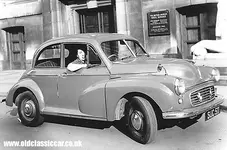TASCAM MAN
New member
Ok I'll get back on the subject ...ADATs or whatever Tascam called there 8 milimeter tape version which i thought was much cooler cause of smaller tapes. But I myself was already looking at a MSR24S at the same time the ADATS and DA-88s were coming out.I was already a reel to reel guy and decided on the 1" format (MSR24S (dolby S) I ordered it brand new and loved it from day one, it ran so smoooooooothe and looked gorgeous !! Had a local music store (mom and pop) order it for me and one of the sales guy there the day it arrived ,did not even want to look at it cause he was so GUNG HO on ADATS......he thought I was nuts !! Grant it,I made many great 24 TK. recordings with it easily and much less hassle than using 3 ADATS!! Think about trying to keep track with what tape/s had what songs on them ....man what a hassle !!! I still have the MSR24S but been in storage after a divorce for lack or room BUT.....its in super good shape and all aligned perfectly and i also have the Tascam M-3500 (24X8X2) IN-LINE mixer to go along with it and would LOVE to set it all up one day again......I miss it so much!! 


